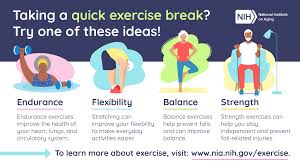Discover the science behind physical fitness and learn how to stay strong and healthy with evidence-based strategies for exercise, nutrition, and recovery.
Physical fitness is more than just hitting the gym—it’s a science-backed approach to maintaining overall health, preventing diseases, and enhancing longevity. Understanding the principles of physical fitness can help you design an effective fitness plan that keeps you strong and healthy for years to come. In this article, we explore the science behind physical fitness, covering key aspects such as exercise, nutrition, recovery, and mental well-being.
The Foundations of Physical Fitness
Physical fitness is comprised of several components that contribute to overall health. These include:
1. Cardiovascular Endurance
Cardiovascular endurance refers to the ability of the heart, lungs, and blood vessels to supply oxygen efficiently during prolonged physical activity. Activities like running, swimming, and cycling help improve cardiovascular endurance, reducing the risk of heart disease and improving stamina.
2. Muscular Strength and Endurance
- Muscular Strength: The ability of muscles to exert force. Strength training, such as weightlifting and resistance exercises, helps build muscle mass and increase bone density.
- Muscular Endurance: The ability of muscles to sustain activity over time. Exercises like bodyweight training and circuit workouts enhance endurance and functional fitness.
3. Flexibility
Flexibility improves the range of motion in joints and reduces the risk of injuries. Regular stretching, yoga, and dynamic warm-ups contribute to better flexibility.
4. Body Composition
Body composition refers to the ratio of fat to lean muscle mass in the body. Maintaining a healthy body composition through exercise and a balanced diet is crucial for long-term health.
The Role of Exercise in Physical Fitness
1. Strength Training for Muscle Growth
Strength training is essential for building muscle and maintaining metabolic health. Research shows that resistance training can:
- Improve bone density and reduce the risk of osteoporosis
- Enhance metabolic rate and aid in weight management
- Improve posture and reduce the risk of musculoskeletal injuries
2. Cardiovascular Exercise for Heart Health
Aerobic exercises such as running, swimming, and brisk walking strengthen the heart, improve circulation, and enhance lung function. The American Heart Association recommends at least 150 minutes of moderate-intensity aerobic exercise per week.
3. The Importance of Functional Training
Functional training focuses on exercises that mimic real-life movements, improving overall mobility and coordination. Examples include squats, lunges, and kettlebell swings.
Nutrition: Fueling Your Fitness Journey
1. Macronutrients: The Building Blocks
- Proteins: Essential for muscle repair and growth. Sources include lean meats, fish, eggs, legumes, and dairy.
- Carbohydrates: Provide energy for workouts. Choose complex carbs such as whole grains, fruits, and vegetables.
- Fats: Support hormone production and joint health. Opt for healthy fats from nuts, seeds, and avocados.
2. Hydration: The Key to Performance
Dehydration can lead to fatigue, cramps, and decreased performance. Aim for at least 2–3 liters of water per day, and increase intake during intense workouts.
3. Micronutrients: Small But Mighty
Vitamins and minerals like calcium, magnesium, and iron play a crucial role in energy production, muscle function, and recovery.
Recovery: The Science of Rest and Regeneration
1. Sleep and Muscle Recovery
Adequate sleep (7–9 hours per night) is essential for muscle repair and hormone balance. Sleep deprivation can lead to increased cortisol levels, affecting recovery and performance.
2. Active Recovery and Stretching
Incorporating light activities like yoga, foam rolling, and walking on rest days can improve circulation and reduce soreness.
3. Managing Stress and Mental Well-being
Chronic stress can hinder progress and lead to burnout. Meditation, deep breathing, and relaxation techniques can improve mental resilience and overall fitness.
Physical fitness is a lifelong commitment that requires a balanced approach to exercise, nutrition, and recovery. By understanding the science behind fitness and implementing evidence-based strategies, you can stay strong and healthy while reducing the risk of chronic diseases. Whether you’re a beginner or an experienced athlete, incorporating these principles will help you achieve sustainable fitness goals.
FAQs
1. How often should I exercise to stay fit?
A combination of strength training (2–3 times per week) and cardiovascular exercise (150 minutes per week) is recommended for optimal fitness.
2. What is the best diet for fitness and muscle gain?
A balanced diet rich in protein, complex carbohydrates, and healthy fats supports muscle growth and overall health.
3. Can I stay fit without going to the gym?
Yes! Bodyweight exercises, outdoor activities, and home workouts can effectively maintain fitness levels.
4. How does sleep impact physical fitness?
Sleep is crucial for muscle recovery, hormone regulation, and overall performance. Aim for 7–9 hours per night.
5. What is the role of hydration in fitness?
Proper hydration prevents fatigue, supports joint health, and improves endurance, making it essential for any fitness regimen.
By applying these principles, you can enjoy a healthier, stronger body while optimizing your overall well-being.